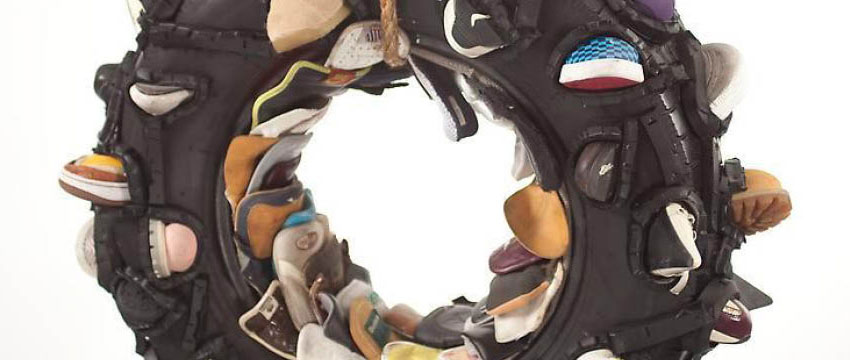uptown: nasty women/bad hombres at El Museo del Barrio June 13 through November 5, 2017 is an exhibition of work by artists who live or work in Uptown Manhattan: El Barrio, Harlem, Washington Heights, or Inwood.
The exhibition is part of Columbia University’s first Uptown triennial produced by The Wallach Art Gallery.
The origin of nasty women and bad hombres
“Nasty Woman” and “Bad Hombres” were phrases used by now President Trump in his final debate with Hillary Clinton on October 19, 2016.
He said, “And once the border is secured, at a later date, we’ll make a determination as to the rest. But we have some bad hombres here, and we’re going to get them out.”
“And once the border is secured, at a later date, we’ll make a determination as to the rest. But we have some bad hombres here, and we’re going to get them out.” ~ Donald Trump
Later in the debate Trump interrupted Clinton and called her, “Such a nasty woman.”
“Such a nasty woman” ~ Donald Trump
The internet lit up. Like other words of hate, we flip them around into phrases of brotherly and sisterly love.
Have you ever noticed how people who are drugged out or out of their minds describe themselves when they are criticizing others? What should be done with the “bad hombre” in the White House? Was he really talking about his woman, women, or his mother perhaps?
There are nasty women and bad hombres everywhere, but if you come Uptown, you will find many hard working families who contribute “bigly” to the fabric of New York City and our America.
We nasty women and bad hombres are just getting started.
#NastyWoman #BadHombres
The Issues in uptown: nasty women/bad hombres Issues
East Harlem, Harlem, Washington Heights, and Inwood are all barrios in northern Manhattan. Barrio life is pretty much like life everywhere, but with some of its own distinct flavors.
There is a lot of poverty in the Barrio though, and poverty debases all peoples equally. The daily grind of poverty increases the impacts of sexism, racism, homophobia, negative media, lack of health care, environmental degradation, and violence. All communities deal with these issues, but being poor amplifies the effects of these problems on your life.
In this exhibition, you will see ways that we turn adversity into beauty. There is art made from the trash that we find all around us, and made by hand because we cannot afford to buy things.
Necessity is the mother of invention and the Barrio is very inventive.
Artists in uptown: nasty women/bad hombres
Artists are the swamp that cleans the waters of life before they enter the seas of history. That’s what these artists are doing. They are doing it in ways that you won’t see in Midtown.
When Jean-Michele Basquiat (Haitian-Puerto Rican) was a homeless graffiti artist tagging the Lower East Side, nobody thought he would become the artist whose work sold for the highest price for an American artist, a Black artist, or an artist whose active period began after 1980. The Barrio is Beautiful!
Elan Cadiz
Vladimir Cybil Charlier
Pepe Coronado
COCO144/Roberto Gualtieri
Jaime Davidovich
Carlos De Jesus
Rene De Los Santos
Francisco Donoso FEEGZ/Carlos
Jesús Martínez Domínguez
Sandra Fernández
Marquita Flowers
Reynaldo García Pantaleón
Alex Guerrero
Leslie Jiménez
Lauren Kelley
Rejin Leys
Stephanie Lindquist
Miguel Luciano
Luanda Lozano
Ivan Monforte
José Morales
Darío Oleaga
Jaime Permuth
Kenny Rivero
José Rodríguez
Moses Ros-Suarez
Aya Rodríguez-Izumi
Ruben Natal-San Miguel
Sable Elyse Smith
Rider Ureña
Regina Viqueira
Nari Ward
For more information, visit www.elmuseo.org/uptown-2017

